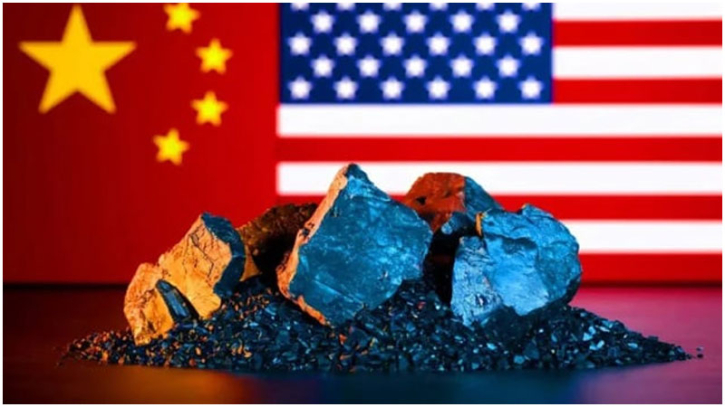China's control of rare earths poses growing challenge for the US

China’s dominance over the global rare earths industry — from mining and processing to research and innovation — is the result of decades of strategic investment. That control now gives Beijing critical leverage in its trade tensions with the United States.
The 17 rare earth elements are crucial for modern industries and defence technologies. They are used in fighter jets, missile guidance systems, radars, smartphones, electric vehicles and medical devices. Analysts warn that Western efforts to build alternative supply chains will take years to become viable.
In Ganzhou, a major hub for “heavy” rare earth minerals such as yttrium and terbium, AFP recently observed busy mining and processing operations. Media visits are uncommon in China, but despite tight surveillance, journalists saw trucks transporting ore and processing plants running at full pace. The region is also building new headquarters for China Rare Earth Group, one of the country’s two state-owned giants that dominate the sector after years of consolidation.
Economics lecturer Heron Lim said the disruptions this year have prompted more countries to expand rare earth mining and processing. He noted that investments made now will likely deliver long-term benefits.
China’s sweeping export restrictions on rare earth technologies in early October sent shockwaves through global manufacturing. The move alarmed Washington, which has been in a renewed trade war with China since President Donald Trump began his second term. In talks in South Korea last month, Trump and Chinese President Xi Jinping agreed to a one-year truce that ensures continued supplies of rare earths and other critical minerals for now — a deal widely viewed as a win for Beijing.
Lim said rare earths will remain central to future US-China economic negotiations, because China has shown it is willing to use trade tools to keep pressure on Washington. He added that producers dependent on these metals now face a difficult environment as short-term supplies remain uncertain.
The United States and its allies are scrambling to develop alternative mines and processing plants, but experts caution that such efforts could take many years. During the Cold War, the US led global rare earth production through the Mountain Pass mine in California. But as environmental concerns grew and geopolitical tensions eased, the industry shifted abroad in the 1980s and 1990s.
Today, China controls roughly two-thirds of rare earth mining and close to 90 percent of global processing capacity. The country also holds the world’s largest reserves of rare earth minerals and maintains tight export controls on processing technology, preventing expertise from leaving its borders. Beijing also leads in patents, further strengthening its dominance.
Amelia Haines, commodities analyst at BMI, said Western dependency on Chinese rare earths poses significant risks for critical industries, and that these concerns will likely accelerate efforts to improve supply chain security.
The US has been trying to rebuild its capabilities. Recent defense initiatives aim to establish a domestic “mine-to-magnet” supply chain by 2027. Washington is also partnering with allies: Trump signed an $8.5 billion mineral agreement with Australia and deals with Japan, Malaysia and Thailand to support critical minerals projects.
The US has long recognized the security risks. In 2010, during a maritime dispute, China temporarily halted shipments of rare earths to Japan — a move that exposed the geopolitical power Beijing held over the industry. This led the Obama administration to call for greater US resilience, but progress has been slow.
Fifteen years later, China remains firmly ahead as the world’s dominant rare earths power.
.png)




